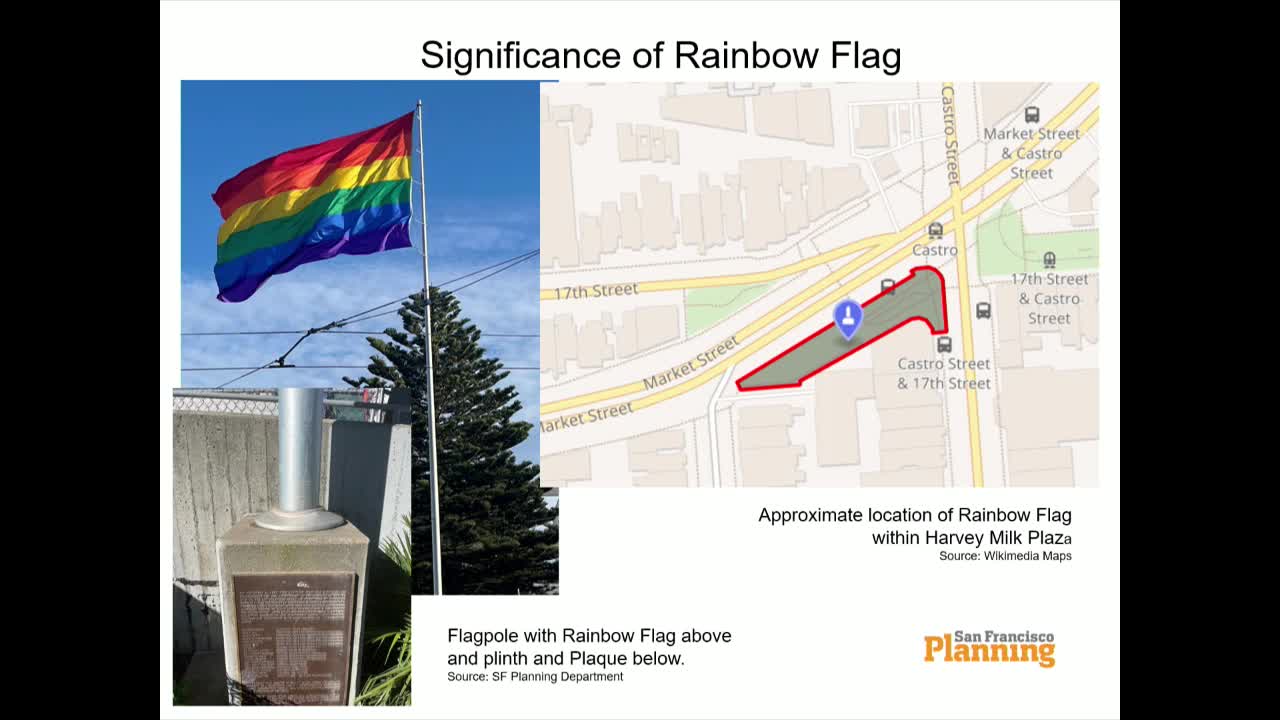City Council approves rainbow flag monument and ordinance for public display
May 15, 2024 | San Francisco City, San Francisco County, California

This article was created by AI summarizing key points discussed. AI makes mistakes, so for full details and context, please refer to the video of the full meeting. Please report any errors so we can fix them. Report an error »

In the heart of San Francisco, a vibrant discussion unfolded at a recent city council meeting, focusing on the enduring legacy of the rainbow flag—a symbol of unity and pride for the LGBTQ community. As council members gathered, the atmosphere buzzed with a sense of purpose, reflecting the city's commitment to honoring its diverse history.
The meeting highlighted the significance of the rainbow flag, which has been a beacon of hope and identity since its debut at the 1978 Gay Freedom Day Parade. This emblem, recognized globally, serves not only as a representation of the LGBTQ community but also as a traditional cultural place, as outlined in the proposed ordinance. The council reviewed a detailed fact sheet that emphasized the flag's role in fostering belonging and expression across generations.
Key features of the ordinance were presented, including the specifications for the flagpole and the flag itself. The council discussed the importance of maintaining the flag's visibility and integrity, with plans for a 20 by 30-foot flag to be flown from an aluminum pole, securely anchored to a concrete plinth. Notably, the ordinance now specifies the colors of the flag—red, orange, yellow, green, blue, and violet—ensuring that the symbol remains true to its original design.
Ownership of this artwork lies with the Department of Public Works, with potential future inclusion in the civic arts collection. The council also addressed the practical aspects of flag maintenance, noting that replacements would occur approximately four times a year, classified as ordinary upkeep without the need for additional approval.
As the meeting concluded, the discussions underscored San Francisco's dedication to preserving its cultural symbols and promoting inclusivity. The rainbow flag, a testament to resilience and community, continues to fly high, reminding all of the city's rich tapestry of identities and the ongoing journey toward equality.
The meeting highlighted the significance of the rainbow flag, which has been a beacon of hope and identity since its debut at the 1978 Gay Freedom Day Parade. This emblem, recognized globally, serves not only as a representation of the LGBTQ community but also as a traditional cultural place, as outlined in the proposed ordinance. The council reviewed a detailed fact sheet that emphasized the flag's role in fostering belonging and expression across generations.
Key features of the ordinance were presented, including the specifications for the flagpole and the flag itself. The council discussed the importance of maintaining the flag's visibility and integrity, with plans for a 20 by 30-foot flag to be flown from an aluminum pole, securely anchored to a concrete plinth. Notably, the ordinance now specifies the colors of the flag—red, orange, yellow, green, blue, and violet—ensuring that the symbol remains true to its original design.
Ownership of this artwork lies with the Department of Public Works, with potential future inclusion in the civic arts collection. The council also addressed the practical aspects of flag maintenance, noting that replacements would occur approximately four times a year, classified as ordinary upkeep without the need for additional approval.
As the meeting concluded, the discussions underscored San Francisco's dedication to preserving its cultural symbols and promoting inclusivity. The rainbow flag, a testament to resilience and community, continues to fly high, reminding all of the city's rich tapestry of identities and the ongoing journey toward equality.
View full meeting
This article is based on a recent meeting—watch the full video and explore the complete transcript for deeper insights into the discussion.
View full meeting
